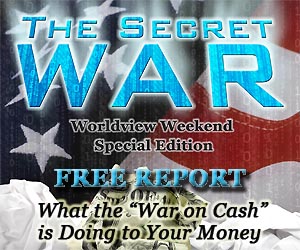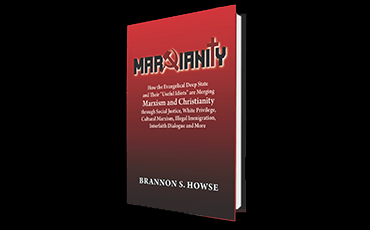European Order:
A Timeline to the Euro-SuperState
European Order: <?xml:namespace prefix = o ns = "urn:schemas-microsoft-com:office:office" />
A Timeline to the Euro-SuperState
By Carl Teichrib (www.forcingchange.org)
Worldview Times NOTE: On December 21st I was interviewed on Worldview Weekend Radio. In the last minutes of the show, Brannon Howse, knowing I had formulated an extensive timeline on European integration, asked me to speak on the subject of regional unification. How does a person encapsulate 200 years of continental integration in ten minutes? Knowing it was an impossible task, Brannon asked me after the show to send a portion of my timeline for Worldview Times readers. I agreed.
December Preamble: On December 7, 2011, Germany's Angela Merkel and France's Nicolas Sarkozy spearheaded a call for European nations to give up economic sovereignty. Euro-nations, according to Merkel and Sarkozy, should no longer have control over their own spending but operate under the umbrella of a supranational body. For readers of Forcing Change, this shouldn't have come as a surprise after all, the November issue of Forcing Change directly stated that "what we are witnessing is a tug-of-war between the last vestiges of nationalism and independence versus the next phase of continental unification; the European SuperState."
The following timeline is the first half of a larger article published in the November issue of Forcing Change. The complete timeline is available to members of Forcing Change. If you're not a member of Forcing Change, seriously consider joining today; besides reading the latest ground breaking issue, you'll have direct access to all back-issues an education in its own rite, and an incredible research resource.
The eyes of the world are watching as the Euro currency is struggling to stay afloat, and as European nations teeter on the brink of chaos and economic ruin. What will it take to bring the continent out of this mess? The latest scheme, the joint Eurobond "an all-for-one, one-for-all way of having different countries guarantee each others' debts" won't cut it in the long run. For the fact remains; 17 nations are bound by a monetary union through the euro, yet they are fiscally diverse. That is, while each of the Euro-system countries use a common currency, their fiscal houses lack unity; each have different spending priorities, tax structures, welfare programs, debt levels, and budgetary requirements. Hence, Germany and France find themselves tied to the economic problems of Italy and Greece through a shared monetary instrument. Yet they are fiscally and culturally separated. The breakup of the Euro and a return to national currencies seems imminent.
But there is another way of looking at this. In my estimation, what we are witnessing is a tug-of-war between the last vestiges of nationalism and independence versus the next phase of continental unification; the European SuperState. The road to stability in this context means more integration, more harmonization, more centralization. It means fiscal standardization through technical management, and the strengthening of the Euro-system along with a corresponding decline in national autonomy. Moreover, if Europe can manage its way out of this crisis through deeper amalgamation (and possible enlargement), then the rest of the world will look at this as a road map to global stability: A New International Economic Order through regional management. Don't be surprised if this eventually includes a new global trading currency based on energy and carbon an idea to be heavily pursued during international conferences next year. (The December edition of Forcing Change will highlight some of these 2012 meetings).
Therefore, it is important to see the bigger European picture, for this will help with perspective. The rest of this article is a timeline demonstrating an historic panorama one that frames the common desire of international elites, socialists, communists, fascists, bankers, capitalists, statesmen and politicians. Although the timeline is incomplete, it should suffice in providing a window into continental unification.
1814: French philosopher and founding father of sociology, Henri de Saint-Simon, published an essay titled "The Reorganization of the European Community." He proposed a King of Europe be established, and that this monarchy would be hereditary. Likewise, a European Parliament would be formed: "Men of business, scientists, magistrates, and administrators are the only classes who should be summoned to form the House of Commons of the great parliament." He also proposed a "House of Peers" similar to a senate and that the peers be nominated by the King. Taxes, education across the continent, and a general code of ethics would fall under the administrative jurisdiction of the Parliament, among other duties.
"To colonize the world with the European race, superior to ever other human race; to make the world accessible and habitable like Europe such is the sort of enterprise by which the European parliament should continually keep Europe active and healthy."
- Henri de Saint-Simon, Social Organization, the Science of Man and Other Writings (New York: Harper Torchbooks, 1964), p.49.
Saint-Simon sent a copy of his essay to the Parliaments of England and France, telling them that a European constitution should be drafted, and that the two should pursue this grand ideal; "...the union can change the state of Europe, because England and France together are stronger than the rest of Europe."
1849: While attending the Peace Conference in Paris, French poet Victor Hugo called for a United States of Europe.
1867: Initiated by Charles Lemonnier, a devotee of Saint-Simon, a group of French pacifists gathered in Geneva, Switzerland to form the Pacifist Congress. The aim was to determine the political prerequisites for a democratic United States of Europe, "in the name of the immortal principles of the French Revolution." That same year, the League of Peace and Freedom held their inaugural congress in Geneva. Here, Russian revolutionary Mikhail Bakunin called for an equalization of European nations, and the establishment of a United State of Europe.
- See the Friends of Peace Monuments website [http://peace.maripo.com]. For Bakunin, see his speech, "Federalism, Socialism, Anti-Theologism," at Marxists.org.
1870: In a pamphlet published by the Paris Commune, we read these words,
"On both banks of the disputed river, the German and the French, let us offer each other our hands. Let us forget the military crimes that the despots had us commit against each other. Let us proclaim the Freedom, Equality, and Fraternity of peoples. Through our alliance, let us found the UNITED STATES OF EUROPE." (capitals in original)
1899: The United States of Europe: On the Eve of the Parliament of Peace, was published. The author was famous journalist and spiritual adventurer, William T. Stead, who had traveled Europe promoting Tsar Nicholas' peace program for the coming Hague Peace Conference. Stead viewed a coming United States of Europe as a major step towards a Federation of the World.
1911: Two socialist members of the German Reichstag advocated a United States of Europe.
Comrade Ledebour:
"We demand the economic and political union of the European states. I am firmly convinced that, while it is certain to come during the period of Socialism, it can also come to pass before that time, that we will live to see the UNITED STATES OF EUROPE." (capitals in original)
Comrade Kautsky:
"For a lasting duration of peace, which banishes the ghost of war forever, there is only one way to-day: the union of the states of European civilisation into a league with a common commercial policy, a league parliament, a league government and a league army the formation of the United States of Europe. Were this to succeed, then a tremendous step would be achieved. Such a United States would possess such a superiority of forces that without any war they could compel all the other nations which do not voluntarily join them to liquidate their armies and give up their fleets."
- Quoted by Rosa Luxemburg, "Peace Utopias," as reprinted by Marxists.org.
1914: President of Columbia University, Nicholas Murray Butler, outlined the creation of a "United States of Europe." At the same time he recognized this as part of a broader world program;
"...but the time will come when each nation will deposit in a world federation some portion of its sovereignty for the general good. When this happens it will be possible to establish an international executive and an international police, both devised for the especial purpose of enforcing the decisions of the international court."
- Nicholas Murray Butler, A World in Ferment: Interpretations of the War for a New World (New York: Charles Scribner's Sons, 1918), p.36.
1915: The League for World Peace published their paper, The Allies Pledged to a United States of Europe, containing official statements from national leaders, expert opinions, and suggested details for a European/International constitution. It was believed that an effective international order would emerge from the ashes of World War I.
1915: The slogan, "United States of Europe," was debated within communist revolutionary circles. V.I. Lenin entered the discussion by asserting that a United States of Europe built on capitalist grounds would be "either impossible or reactionary." Leon Trotsky viewed the unification of Europe along revolutionary socialist lines as a step toward world union,
"The United States of Europe without monarchies, standing armies and secret diplomacy is therefore the most important integral part of the proletarian peace program... The salvation of the Russian revolution lies in its propagation all over Europe... the founding of a stable regime of proletarian dictatorship would be conceivable only if it extended throughout Europe, and consequently in the form of a European Republican Federation. The state-unification of Europe, to be achieved neither by force of arms nor by industrial and diplomatic agreements, would in such a case become the unpostponable task of the triumphant revolutionary proletariat... The United States of Europe is the slogan of the revolutionary epoch into which we have entered." (italics in original).
- See V.I. Lenin, "On the Slogan for a United States of Europe," and Leon Trotsky, "The Program of Peace," as republished in Marxists.org.
1919: Italian Fascism made its appearance. It was initially conceived as part of a larger European revolutionary movement leading to a Confederation of European States.
1923: Pan Europa was published by Richard Coudenhove-Kalergi, recommending the creation of a customs union. Coudenhove was an influential voice for European unification throughout his lifetime.
1925: Germany is admitted into the League of Nations. Many statesmen of the day hoped that this would be a catalyst leading to Pan-Europe. On December 15, the Berkeley Daily Gazette carried a United Press story on Germany's entrance; "If Germany and France can become friends and admit Italy into their amicable councils, the beginning of pan-European evolution may reveal itself."
- J.W.T. Mason, "Statesman Envisages Ideal of Pan-Europe," Berkeley Daily Gazette, Dec. 15, 1925, p.15.
1926: The first Pan-Europa Congress was held in Vienna with 2000 people attending. This conference birthed a Pan-Europa movement of national organizations committed to European unification.
1927: Italian ex-Prime Minister Francesco Nitti wrote,
"What we must do is to restore political and economic freedom to a place of honour, and to prepare the way for the United States of Europe by vast tariff and economic unions. TRUE PEACE IS TO BE FOUND ONLY IN THE UNITED STATES OF EUROPE." (capitals in original).
- Francesco Nitti, Bolshevism, Fascism and Democracy (London: George Allen & Unwin, 1927), p.220.
1929: In September, French Foreign Minister Aristide Briand gave a speech before the League of Nations, calling for the creation of a federated association of European states.
1930: The French government sent a special memorandum to European members of the League of Nations regarding the possibility of planning a European Federal Union. This memorandum suggested "a European Assembly, a European Council, a European Economic Committee, Financial Committee, Transit Committee... and a host of more specialized sub-committees." Although the 26 governments who responded to the memorandum agreed in principle, they lacked any sense of cohesive methodology.
1930: French intellectual Bertrand de Jouvenel published Towards the United States of Europe. In 1931 he published From European Economic Unity to the World Directed Economy. For a time in the 1940s Jouvenel was aligned with a French pro-European group, Le Groupe Collaboration (Collaboration, a Grouping of Energies for European Unity). "The Group" believed that Germany could solve France's problems through German-directed European leadership.
1930/31: The exact year when the New Europe Group formed is difficult to pin down. Founded in England by Dimitrije Mitrinovic, an enigmatic Serbian mystic with interests in Rosicrucianism, Gnosticism, and Eastern religions, the New Europe Group promoted European federalism through lectures, a publication, and the circulation of articles and letters by "D.M." The New Europe Group was a breeding ground for socialistic ideas, a place to study Marxism, and a training ground for "a new kind of revolution - non-violent but radical."
- For more on the New Europe Group and its leader, "D.M," see Watson Thomas, Turning Into Tomorrow (New York: Philosophical Library, 1966).
1933: Italian Fascist Benito Mussolini told the National Council of Corporations; "Europe may once again grasp the helm of world civilization if it can develop a modicum of political unity."
- As quoted by John Laughland, Tainted Source: The Undemocratic Origins of the European Idea (Little, Brown and Company, 1997), p.43.
1933-1945: The National Socialist German Workers' Party hold power in Germany. Although the Nazi regime suspends pan-european organizations, it nevertheless pursues its own European integration platform. A "new European order" was to be established.
1936: Federal Union formed as an organization to advance European and world union.
1939: Commenting on the new war with Germany, the editors of The New International placed the conflict within the context of continental regionalism, then world unification.
"The overthrow of imperialism, the victory of the masses in the triumph of socialism, and only this can stop the war and bring a just and lasting peace. Through a socialist peace, freedom, security, and economic coordination can guarantee the future. The Socialist United States of Europe, of the Americas, a free Asia and a free Africa, a world Federation of Socialist Republics: these mighty slogans now, with the war, lose all their abstractness. They and they alone are the goal, the immediate goal, for mankind." (italics in original)
- "The Second World War," October 1939, as reprinted in Marxists.org.
1940: Nazi leader Hermann Goring, President of the German Reichstag and Commander of the Luftwaffe, submitted orders for "the large-scale economic unification of Europe," also known as the "Central European Economic Community." This was under the concept of Groâraumwirtschaft - "large area economy." Historian John Laughland explains,
"It mentioned the establishment of fixed exchange rates between the currencies of other countries and the Reichsmark; the abolition of customs barriers in Europe and the creation of a 'customs-free marketing area'..."
- John Laughland, Tainted Source: The Undemocratic Origins of the European Idea (Little, Brown and Company, 1997), p.24.
1941: Circulated in one Communist paper,
"United in this common struggle German, French, Italian, Hungarian, Romanian workers will move towards the SOCIALIST UNITED STATES OF EUROPE, which will offer a fraternal hand to the USSR, so that together they can carry out the final struggle for the freeing of all of humanity: the Socialist United States of the World. LONG LIVE THE RED ARMY! LONG LIVE THE SOVIET UNION! LONG LIVE THE SOCIALIST UNITED STATES OF EUROPE! LONG LIVE THE FOURTH INTERNATIONAL!" (capitals in original)
- Barta, "Long Live the Red Army of Workers and Peasants!" as reprinted in Marxists.org.
1942: A high-level conference is held in Berlin regarding the Nazi conception of a European Economic Community. Historian John Laughland gives us some details,
"The titles of the lectures delivered at this conference are eerily reminiscent of modern pro-European discourse: 'The Economic Face of the New Europe,' 'The Development Towards the European Economic Community,' 'European Agriculture,' 'The European Industrial Economy,' 'Employment in Europe,' 'European Transport Issues,' 'European Currency Matters,' 'European Trade and Economic Treaties'..."
- John Laughland, Tainted Source: The Undemocratic Origins of the European Idea (Little, Brown and Company, 1997), p.27.
Laughland relates that in 1942 the Nazi Foreign Ministry had created a "European Committee," and the following year it drafted plans for a European confederation. Harmonized social programs and labour standards, a European customs union, and an eventual monetary union were proposed.
George F. Kennan, an American foreign affairs advisor and later Ambassador to the Soviet Union, described in his memoirs a particular point of realization during World War II.
"When stationed in Berlin during the war I had been struck with the fact that Hitler himself, albeit for the wrong reasons and in the wrong spirit, had actually accomplished much of the technical task of the unification of Europe. He had created central authorities in a whole series of areas: in transportation, in banking, in procurement and distribution of raw materials, in the control of various forms of nationalized property. Why, I asked myself, could this situation not be usefully exploited after an Allied victory? What was needed was an Allied decision not to smash this network of central controls when the war was ended but rather to take it over, to remove the Nazi officials who had made it work, to appoint others (and not necessarily all non-Germans) in their place, and then to supplement this physical unification with a new European federal authority."
Kennan explained that when he returned to the United States in 1942, he approached the US State Department with this idea, "but the effort was fruitless." After the war, however, Kennan found himself in a newly created State Department position, Director of Policy Planning. Here, Kennan and his staff influenced the development of the Marshall Plan, which by its nature went beyond reconstruction and began the steering process from the American side toward European harmonization.
- For the quote and his early frustration with the State Department, see George F. Kennan, Memoirs, 1925-1950 (Boston: Little, Brown and Company, 1967), p.417
1943: Italian Communist, Altiero Spinelli, organized the European Federalist Movement.
1944: Altiero Spinelli released a Manifesto calling for progressive and reactionary movements to recognize the need for a United Europe.
1946: At Hertenstein, Switzerland, the first conference of European Federalists took place, upon which the Hertenstein Programme was released. The first line of this document reads: "A European Community on federal lines is a necessary and essential contribution to any world union." The last line states: "By showing that it can solve the problems of its destiny in a federalist spirit, Europe will make its contribution to reconstruction and to the creation of a world community of peoples."
1946: Winston Churchill (left) told an audience at Zurich University; "Our constant aim must be to build and fortify the strength of the United Nations Organisation. Under and within that world concept we must re-create the European family in a regional structure called, it may be, the United States of Europe."
- Churchill Speaks, 1897-1963: Collected Speeches in Peace and War (New York: Barnes and Noble, 1998), p.893
1947: The first Congress of the Union of European Federalists took place in Montreux, Switzerland, from the 27th to 31st of August. Moreover, the founder of Pan-Europa, Coudenhove-Kalergi, established the first congress of the European Parliamentary Union.
1947: Winston Churchill put the European dream into a grander context,
"The creation of an authorative, all-powerful world order is the ultimate aim towards which we must strive. Unless some effective World Super-Government can be set up and brought quickly into action, the prospects for peace and human progress are dark and doubtful.
But let there be no mistake upon the main issue. Without a United Europe there is no sure prospect of world government. It is the urgent and indispensable step towards the realisation of that ideal."
- Churchill Speaks, 1897-1963: Collected Speeches in Peace and War (New York: Barnes and Noble, 1998), p.913
NOTE: This ends the first half of the timeline. To read the complete article, log-in with your membership password and access the November issue of Forcing Change. The complete timeline in Forcing Change walks you through the Treaty of London and Rome, the role of the Bank for International Settlements, the Soviet-backed Conference on Security and Co-operation in Europe, the Paris Charter and the OSCE, the rise of the European Central Bank, the 2010 creation of a "Shadow European Council" The Spinelli Group, to Jose Barroso's statements on European federation; "This is a fight for what Europe represents to the world."
Carl Teichrib is editor of Forcing Change.
Support Our Broadcast Network
Trending Stories
Latest
We're a 100% Listener Supported Network
3 Simple Ways to Support WVW Foundation
Make Monthly Donations
-or-
A One-Time Donation
-
Mail In Your Donation
Worldview Weekend Foundation
PO BOX 1690
Collierville, TN, 38027 USA -
Donate by Phone
901-825-0652


















